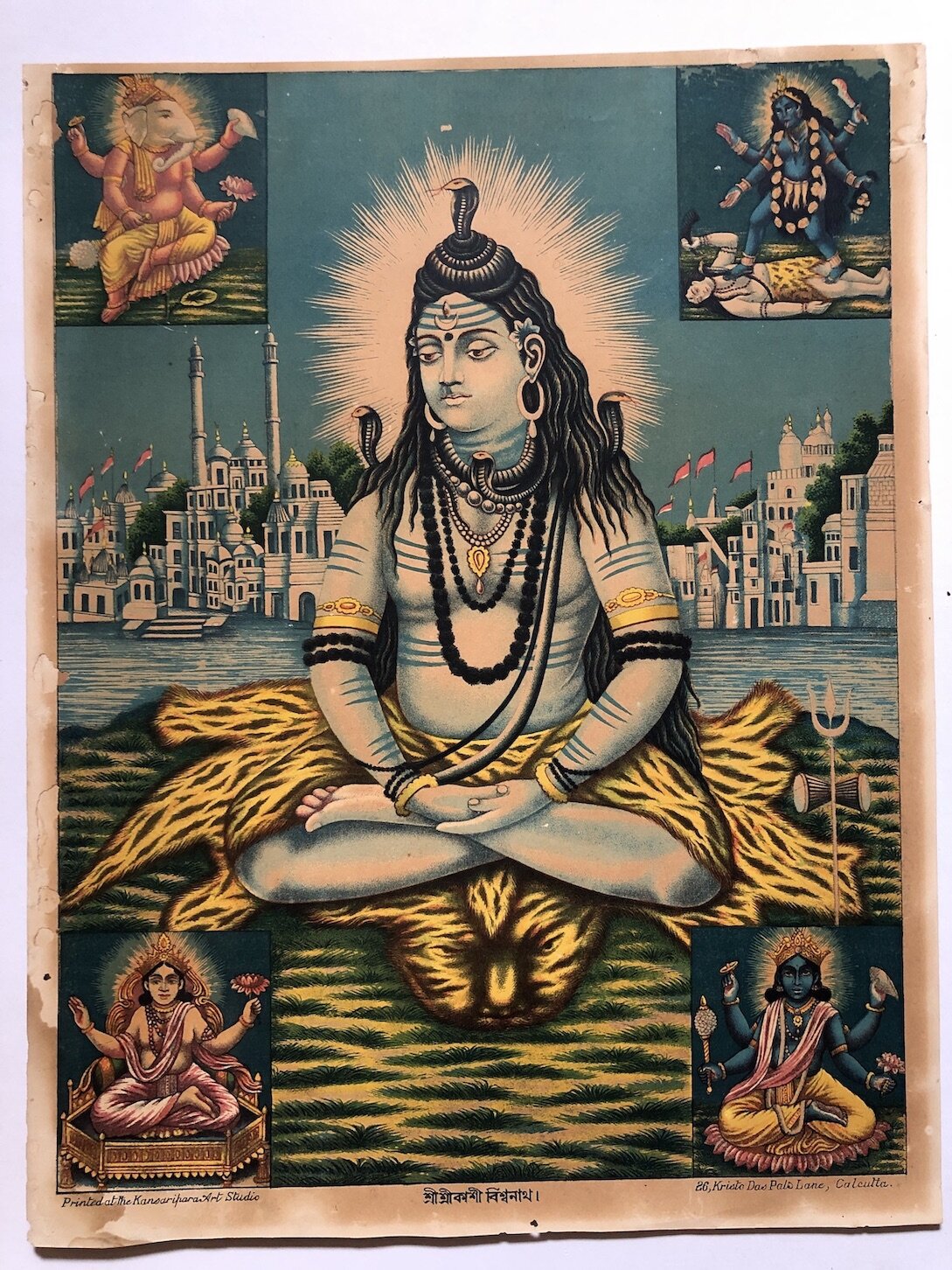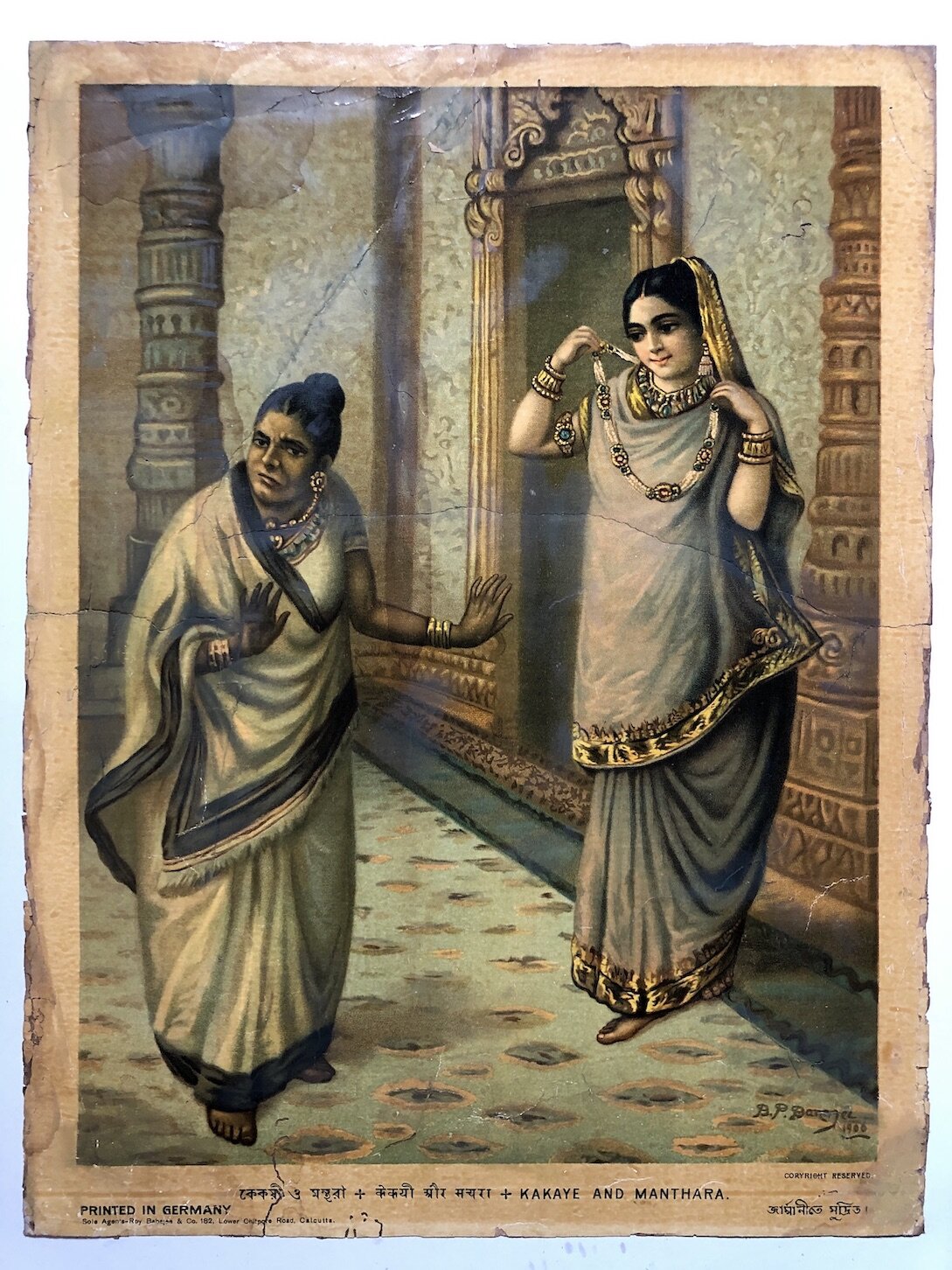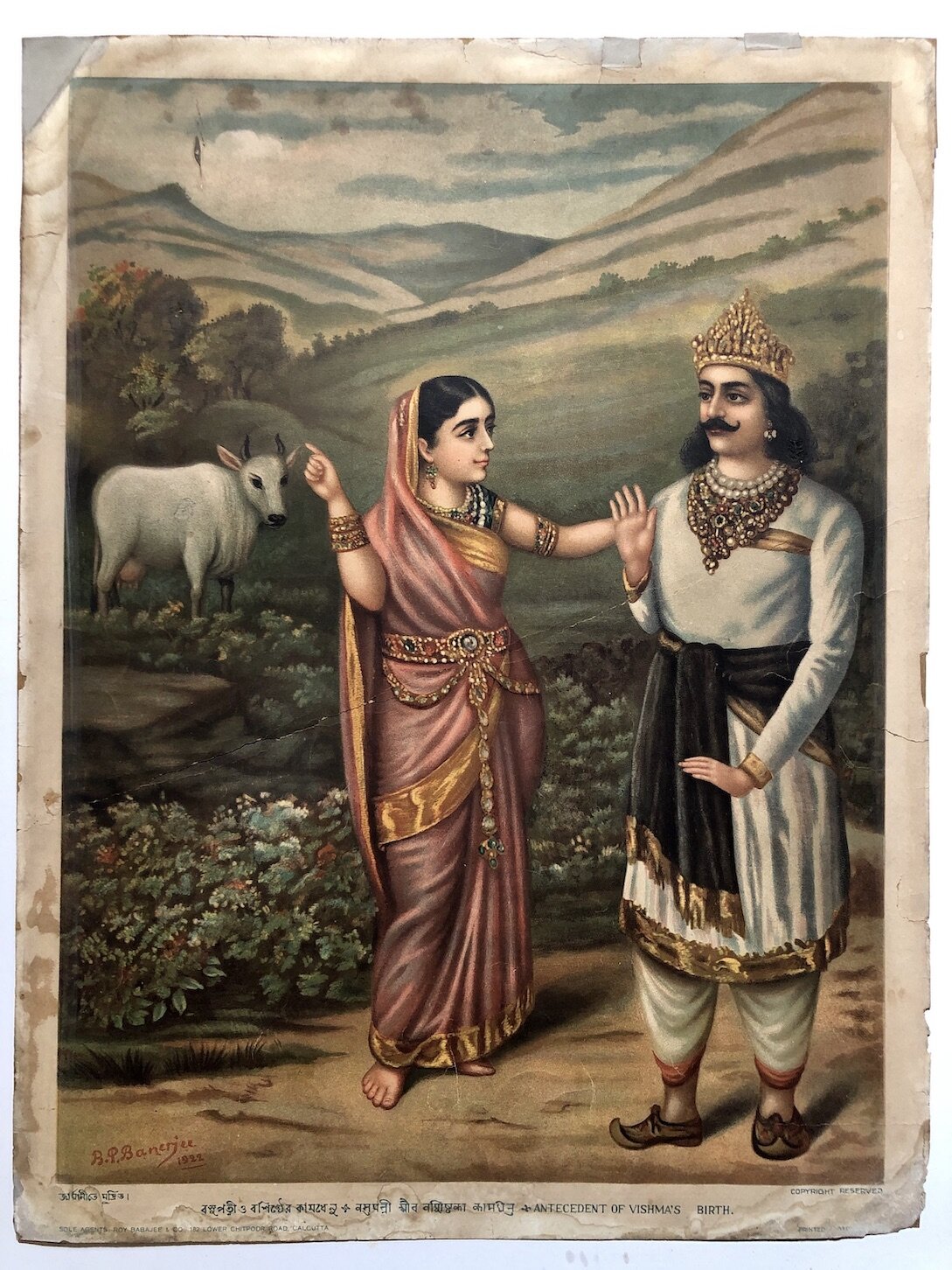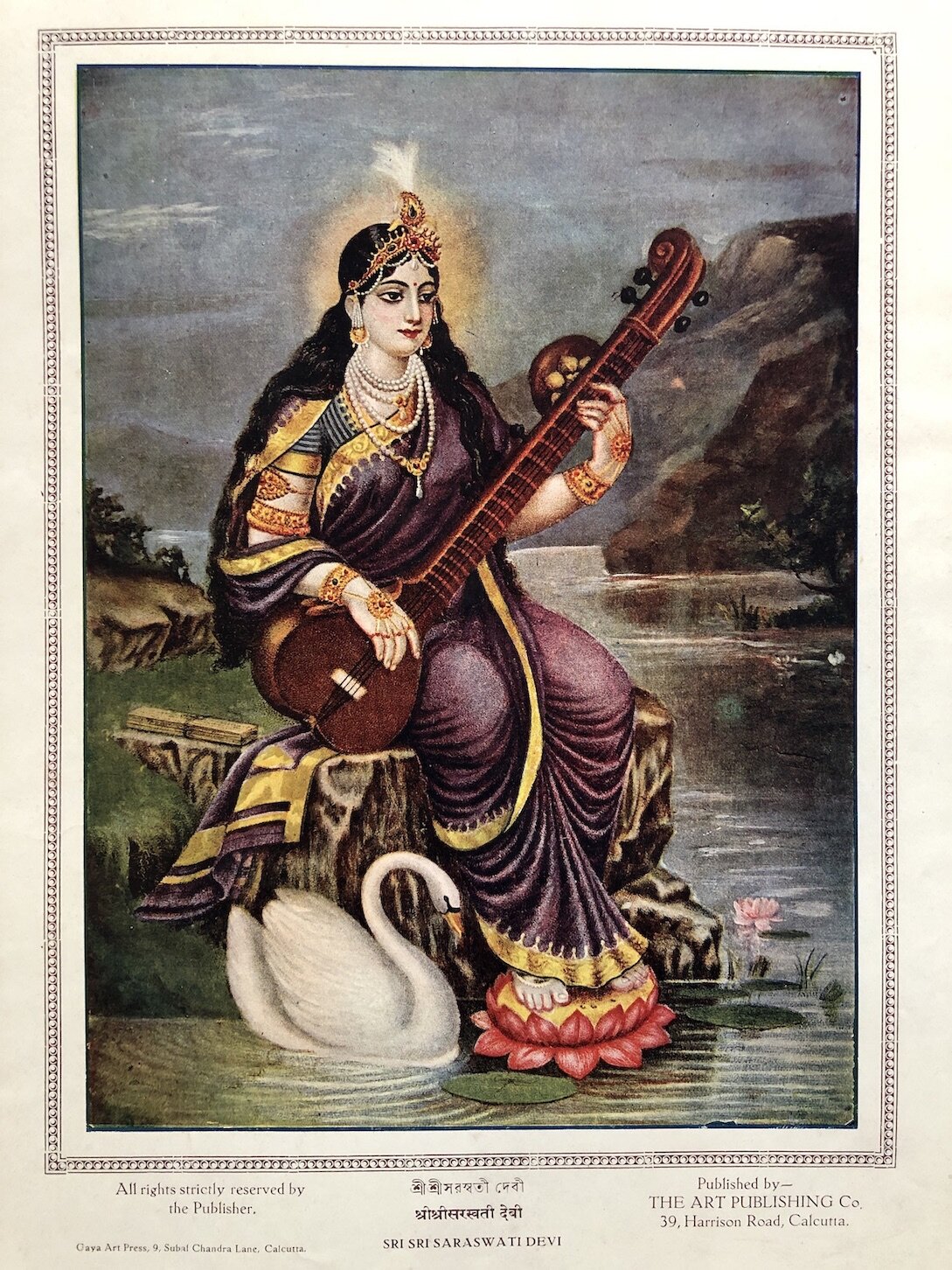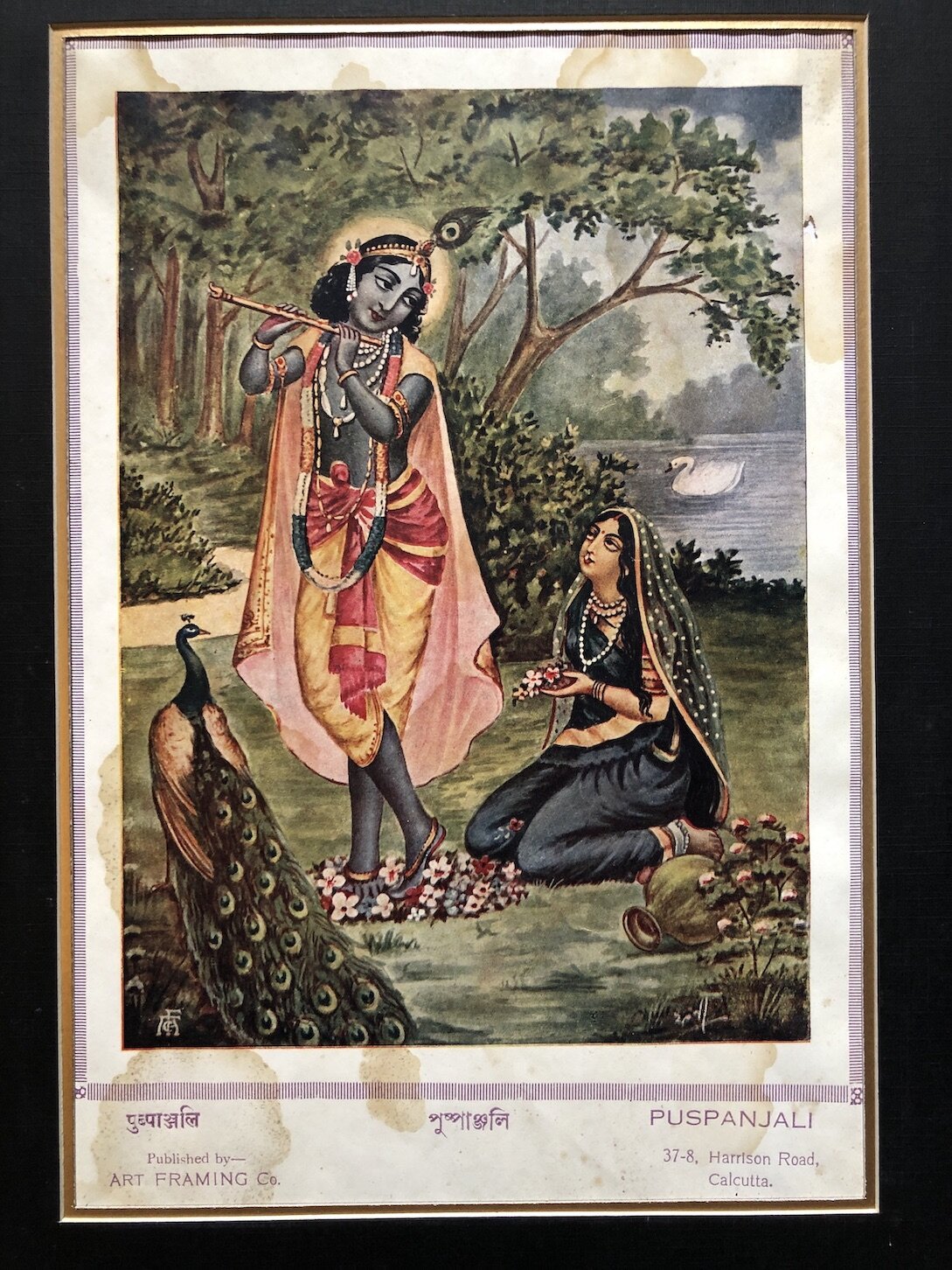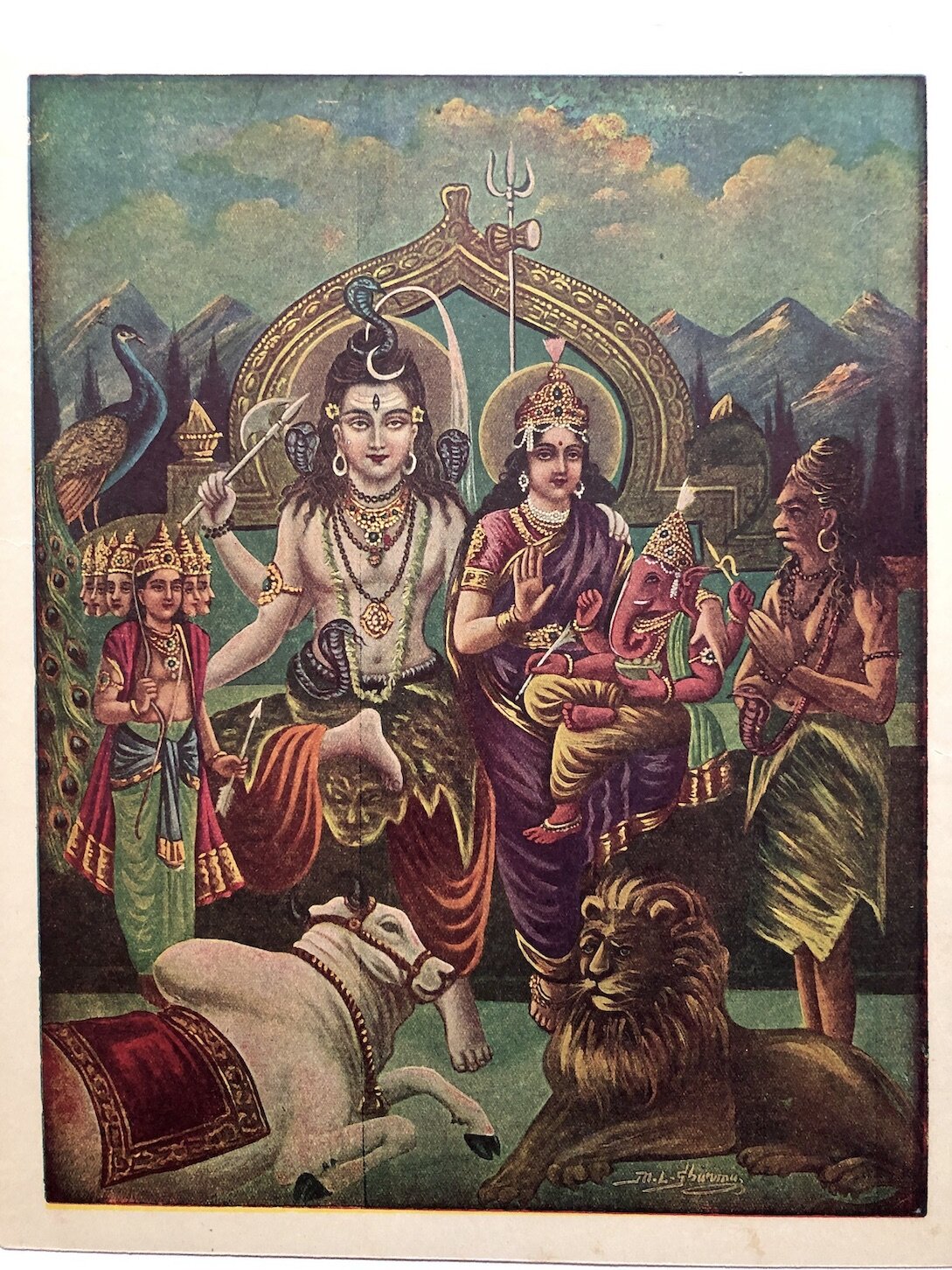Bengal Prints & Oleographs
Bengal School | Calcutta Art Studio | Chore Bagan | Kansaripara Art Studio etc
Art365 India
For prices and other information, please call or email.
If there’s something you’re looking for and don’t see it here, feel free to reach out and we’ll source it for you.
Pictorial icons of figures and scenes from the Hindu pantheon were avidly sold in the commercial bazaars and temple precincts of major Indian cities, and until the final quarter of the 19th century, these images were overwhelmingly produced using woodblock printing or a rapid painting technique perfected by artists in the Kalighat school.
In the latter half of the nineteenth century, pioneer artists and entrepreneurs in the urban centers of colonial India began to recognize the commercial potential of using technologies of mechanical reproduction to create new religious images for popular consumption.
Lithographs of Hindu gods and goddesses appeared by the 1870’s. Like the wood engravings which preceded them, the earliest lithographs were printed in black and highlights in one or two colours were added by hand. By the early 1880’s hand-colouring had become very sophisticated, and by the late 1880’s colour lithographs appeared.
The first two major publishers of prints, the Calcutta Art Studio and Chitrashala Press, were both established in 1878, in Bengal and Maharashtra respectively. In Calcutta the inexpensive prints of the Calcutta Art Studio soon outcompeted the hand-painted works of the Kalighat artists.
Other Calcutta presses include the Oriental Studio, Jubilee Art Studio, PC Biswas, Kansaripara Art Studio and the most successful one, the Chore Bagan Art Studio: Prints from these presses are quite rare, and in most cases we have no more information than the Calcutta addresses of these short-lived presses.
Such was the commercial impact of lithographic prints in India, that from the 1890s, even European printing firms, principally in Germany, England and Italy started producing these traditional Hindu scenes in great quantities for export back to the subcontinent.
These early mythological prints are now extremely rare as many have been lost to time due to the acidic quality of the paper, India’s extreme weather conditions and a general lack of care.







